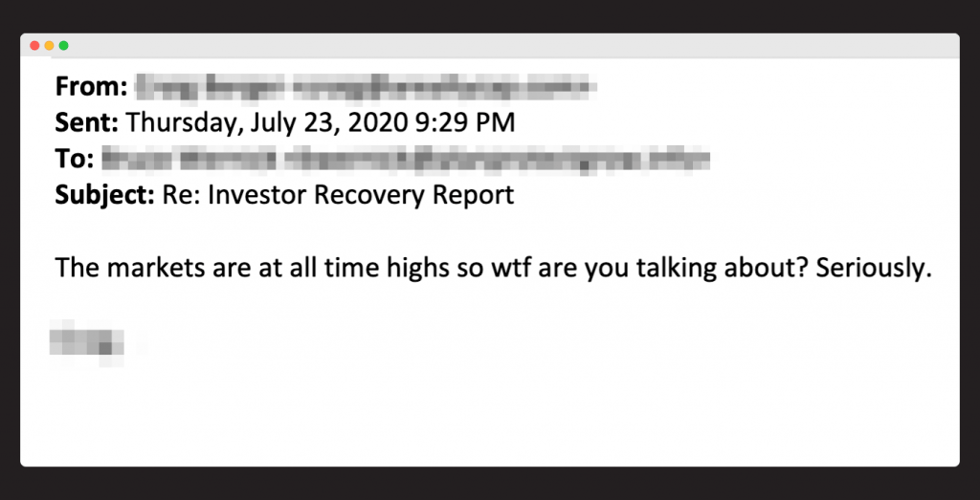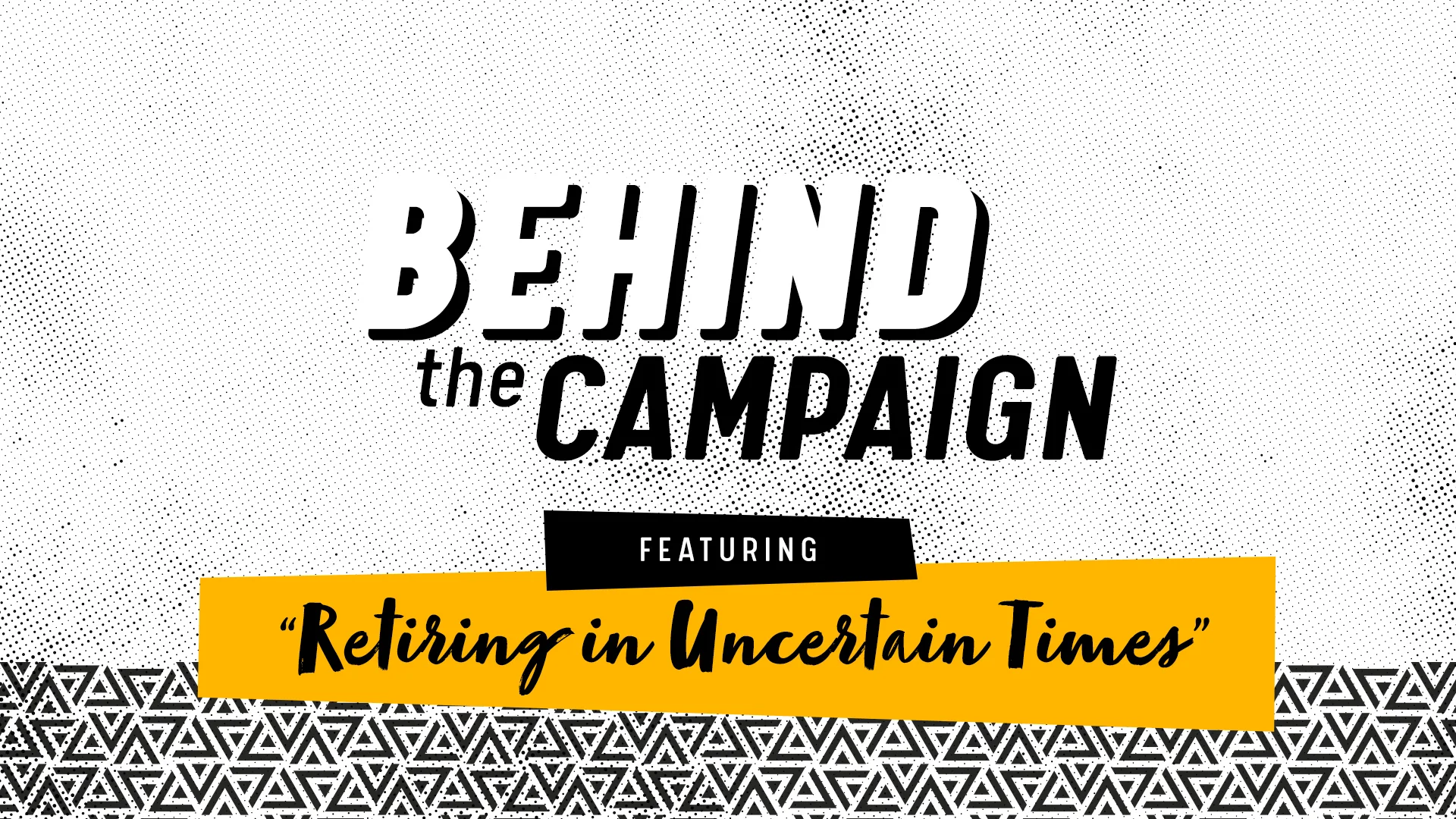How Should You Approach Negative Responses to Your Marketing?
The following is based off of an interaction we had with one of our Snappy Kraken members.
Picture this.
You’ve carefully crafted a message for your newsletter or prospect nurturing email.
It’s thoughtful, topical, with tidbits of information and that particular sparkle you bring to the table.
You’re feeling good about this email.
You hit send.
Soon, you get back a response.
You’re excited to open it.
But instead of agreement, thoughtful praise, or someone willing to sign up for your services, you get this:

This is the response one of our Snappy Kraken members received. It was related to a campaign email.
Not exactly what you expected, right?
After all, when it comes to getting feedback, the hardest thing to stomach is negative feedback. (If it wasn’t difficult, we’d call it something else. Like positive feedback, or free food.)
But if you find yourself on the receiving end of an email like this, what are you supposed to do?
What Should You Do About Challenging or “Negative” Responses?
Should you run and hide from all future consequences?
Should you just give up marketing forever?
Or double down and start a flame war on the other side of the internet?
Well, you could do that. Or you could follow our advice and see this response for what it really is…an opportunity to engage.
Here’s a 2-minute video clip of our Chief Product Officer, Francesca McLin, talking about this email feedback and what we recommended for the Snappy Kraken member.

The Power of Feedback
There are two ways to look at negative feedback, and you’re not alone if the ‘negative’ of feedback is what gets stuck in your craw.
Most of the time people will focus on what’s challenging, and there are times and ways that this can prove as a catalyst for change or help you brainstorm new ideas.
But no matter how well thought-out your message is, you may still find people disagreeing with you.
And that’s okay!
What if, instead of zeroing in on the negative, you took a closer look at feedback.
The truth about feedback is that good, bad, or indifferent, the fact that it was initiated is a good thing.
It means that somebody cared enough about what you’re saying to engage with you.
Your inner dialogue can frame this negatively: “This person thinks I’m crazy and stupid and wrong”.
Or your inner dialogue can be reframed this way:
“This person has taken time out of their day to get in touch with me in response to something I sent them. That’s actually pretty amazing. I managed to articulate something that they had a strong response to.”
And the thing about strong responses? They make excellent conversation starters.
This is a foot in the door to take the relationship to the next level.
From Negative to Positive
Of course, the conversation can only happen if you respond in the right way.
No matter how tempting it might be to send back a sarcastic, wry, or hurt message about how qualified you are, how knowledgeable you are, and how wrong that person is…
…take a deep breath instead.
Rather than jumping in hot, you can instead think out a response that acknowledges the difference of opinion and also allows for greater conversation.
It’s not about changing somebody’s mind.
In reality, for what you’re doing, that doesn’t actually matter.
Allowing freedom of thought is a good thing, and you want your clients, both actual and potential, to feel comfortable talking with your company in a human way.
It builds trust in what you’re doing, as well as leading to greater loyalty.
So, when it came to this response our member received…
Here’s what we suggested as a reply:
Thank you so much for replying [FIRST NAME]! You’re absolutely right — the markets are up.
In our experience talking with many families however, some of them are not properly invested and have experienced significant losses. In other cases, they have missed out on opportunities.
Not everyone is invested into the “markets” generally. In fact, most aren’t.
Furthermore, in the current environment, many are concerned about what’s in store for the future. So this kind of information can be helpful education to call back to mind when things change.
If you review the content, I’m sure you’ll agree that there are timeless principles many investors can benefit from.
If you don’t personally need this information, feel free to disregard it. Hopefully a resource we’ll send in the future will resonate with you more appropriately.
Have a great weekend!
We wanted the person on the other end of this adviser’s message to feel acknowledged. And, we wanted to open the door for the adviser to be able to share where he was coming from.
The truth is, you’re never going to satisfy everybody’s need for content, and there are times that people will disagree with you.
Key Takeaways
Ultimately, when it comes to opening yourself up to people, there are going to be times that you deal with unexpected situations, or feedback you weren’t expecting.
By taking the time to parse through your own feelings, and instead respect those of the people around you, you can see how seemingly negative situations can actually lead to more meaningful connections.
And the response from our Snappy Kraken member?
YOU ARE AMAZING!!!
Thanks so much for this fantastic outlook and response.
Once again, Ariel [one of our success specialists] and Snappy comes through.
Yeah, we’d say that’s worth taking a moment to lean right into challenging responses, wouldn’t you?
New Series: Behind The Campaign
A lot of thought goes into every piece of marketing we create for financial advisers. We’re open about the performance of the campaigns (the metrics), and we publish them often in our reports (like this one).
In addition to sharing our metrics, we’re also gung ho about sharing our methods.
In this new series, Behind the Campaign, we pull in experts from our team to talk about the decision-making process and strategy that goes into specific campaigns.
You can watch the first episode below, or click here to learn more about the series.

Book A Demo Today
Discover how Snappy Kraken helps advisors grow with a powerful marketing system
Request a demo

